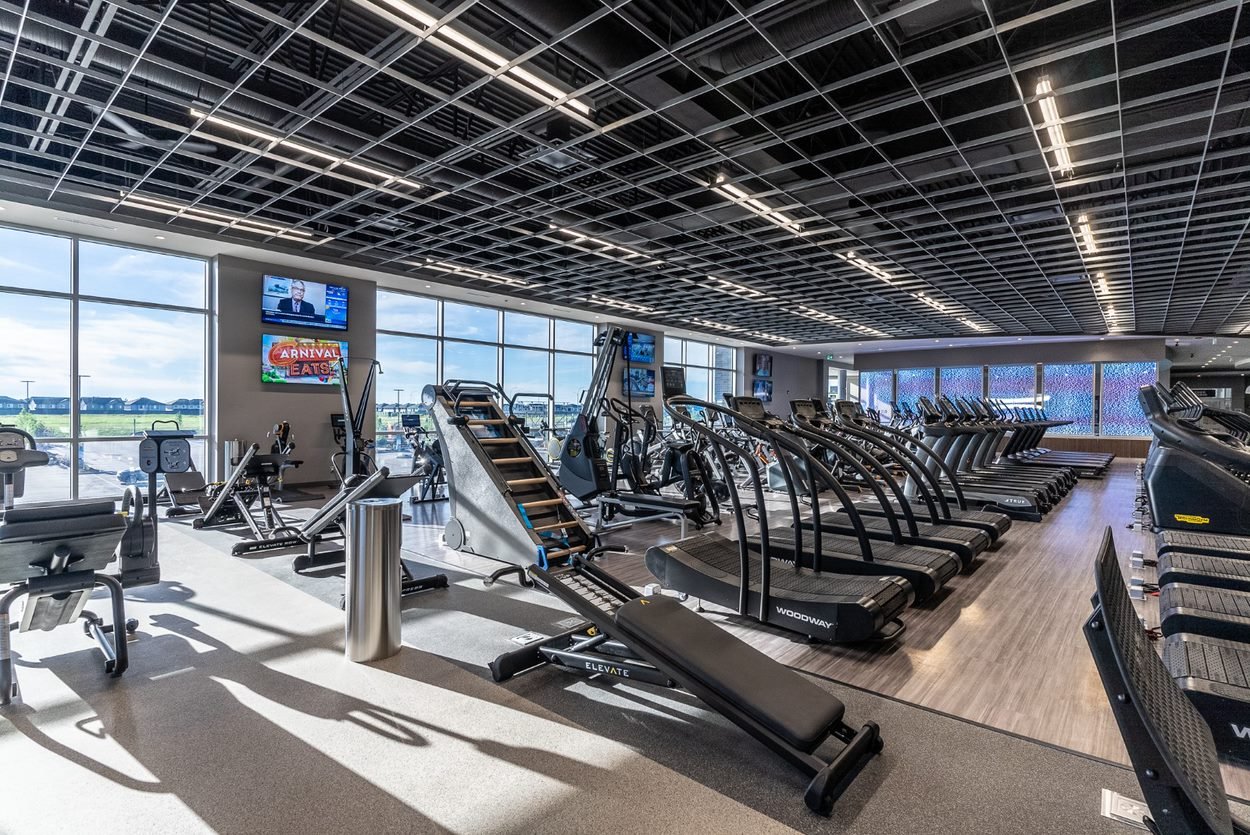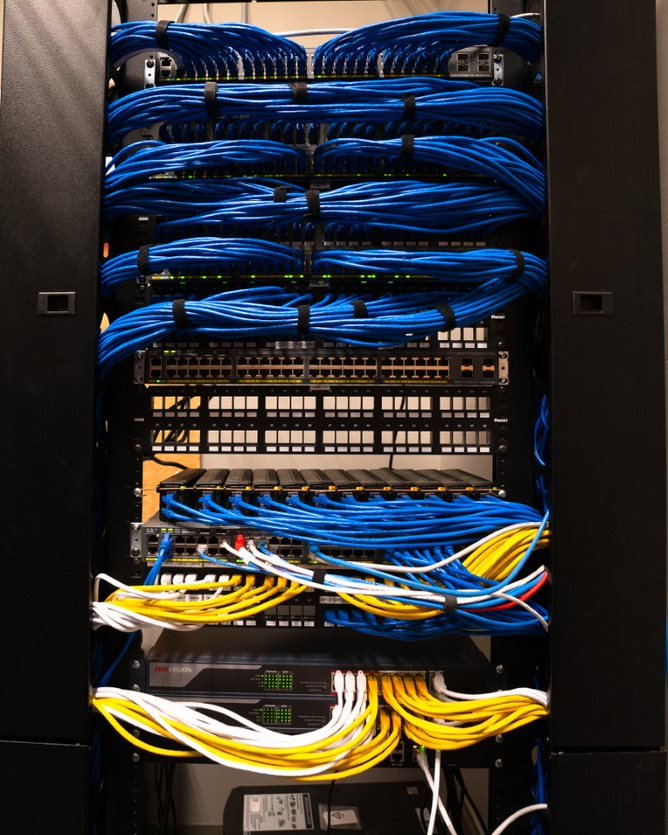Maximizing Your Network: A Guide to AV Over IP
With the increased connectivity requirements of the modern office, it’s no wonder that AV manufacturers are beginning to take advantage of network infrastructure that is already in place. AV over IP can offer huge benefits of scalability and flexibility. It also represents an opportunity for new installations to take advantage of internet connectivity, adding functionality, while making the systems easier to maintain and update.
Displays connected with an AV over IP system at Movati Windermere in Edmonton, AB.
What is AV over IP?
AV over IP is a method of transporting audio, video, and control systems over wired and wireless networks. In an AV over IP system, system inputs (like media players, cameras, microphones and any other source devices) are connected to encoders. These encoders convert the audio and/or video signal to a form that can be transmitted over a local network. Using a standard network switch, these signals are routed to decoders, which convert the signals back into a form that can be easily accepted by outputs (think displays, speakers, etc.).
What's so different about it?
In a conventional installation, the switcher has a fixed number of inputs and outputs. These systems work well for set installations that don't require routing to change. However, with an AV over IP network, inputs and outputs use the same connection. This means that systems can expand port by port, and the only capacity limits are extremely scalable network switches, along with your network’s bandwidth. AV over IP also allows virtual rearrangement, which means changing your system's routing can be done without rewiring anything.
Why should I use AV over IP instead of conventional AV?
Scalability
The biggest advantage to AV over IP is the ability to scale your equipment up and down with your needs, without needing to change equipment. The main equipment this has an effect on is switches. A conventional video matrix switch, for example, may have 8 inputs (sources) and 8 outputs (destinations). Once these have been used, any expansion will require replacing the switch, which can be an expensive upgrade. Using AV over IP, however, the number of inputs and outputs is nearly unlimited, and additional hardware can be added as needed.
Flexibility
Using conventional AV equipment, you may be limited to cable runs of under 100 meters. This can make centralizing your AV equipment very difficult, and result in difficult maintenance or troubleshooting. AV over IP often allows for up to 200 metres of cable before needing an extender, which is more than enough for most installations.
Easy Management
Another advantage of using an AV over IP system is the increased ease of updating and monitoring your devices. Using AV over IP, IT departments can easily push updates across entire AV systems. Many AV over IP systems also allows for easy usage tracking, with the inclusion of management software, like Crestron's XiO Cloud, which allows for enhanced insights into your usage.
This AV over IP distribution rack allows this fitness facility to send any source to any display across a 70,000 square foot facility.
Are there any drawbacks?
Currently, the main limitation with AV over IP is bandwidth. Applications that need high amounts of detail, like medical imagery, need uncompressed high-resolution signals. Basic gigabit networks can only handle compressed video signals, which means some minute details will be lost in transmission.
Additionally, for simple single room AV systems, AV over IP can add unnecessary complications and costs. The main purpose of AV over IP is simplifying signal routing and switching—which isn’t needed for systems with a single output or display. However, if you’re considering building out a larger system at a later time, adding AV over IP at first can make later integration much simpler.
AV over IP systems also call for a level of coordination with IT departments and network administrators. Certain requirements including port openings, configuring virtual LANs, and IP address configurations require the involvement of knowledgable IT professionals. However, working with an experienced AV integrator can make this process pain-free. Additionally, some manufacturers, like Netgear, now offer AV-ready network switches- making network setup much easier.
We partner with a wide variety of manufacturers to provide the best AV over IP solutions for each of our customers—for instance, our recent installation at Movati Athletic Club Windermere uses equipment from QSC, Crestron, Audinate, and Cisco. For more information on all the manufacturers we work with, visit our Partners page.
Interested in learning more about AV over IP?



